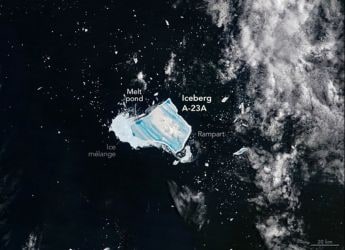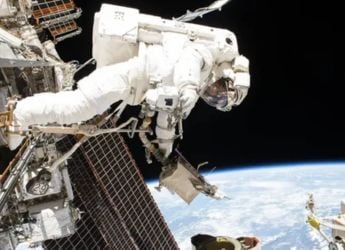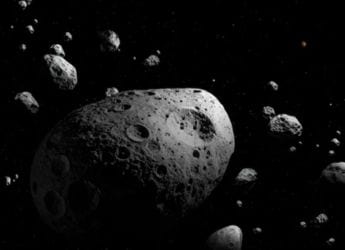- Home
- Science
- Science News
- Researchers to Scan Ocean Floor for Meteorite That Crashed on Earth in 2014
Researchers to Scan Ocean Floor for Meteorite That Crashed on Earth in 2014
The object is estimated to be some half-metre wide and researchers have used catalog data on the object’s trajectory to dig out information on it.

Photo Credit: Pixabay
The meteorite has still kept scientists puzzled about its origin
A mysterious object from space crashed into the ocean off the coast of Papua New Guinea in 2014. Called the CNEOS 2014-01-08, the meteorite has still kept scientists puzzled about its origin but initially, it was speculated that it could be an interstellar object. After its discovery, researchers namely then graduate Amir Siraj, and Harvard professor Avi Loeb first suspected its possible interstellar origin. Now, they are chalking up plans to scan the ocean floor for the object and have described their idea in a new research paper.
The object is estimated to be some half-metre wide and researchers have used catalog data on the object's trajectory to dig out information on it. They noted the high heliocentric velocity of the object and concluded that it could belong to a place beyond our solar system. This meant that with such speed, it was indicative that the meteorite was not bound by the gravity of the Sun. Siraj and Loeb used data from a US Department of Defense spy satellite to measure the object's impact on Earth.
However, the satellite is used for monitoring Earthly military activities and the exact error values of measurement taken by it are not in the public domain. Hence, this makes it difficult to confidently declare CNEOS 2014-01-08 as an interstellar object.
The findings of Siraj and Loeb were echoed by the US Space Force's Space Operations Command's Chief Scientist, Joel Mozer in 2019. He, after analysing the data on the object “confirmed that the velocity estimate reported to NASA is sufficiently accurate to indicate an interstellar trajectory.”
6/ “I had the pleasure of signing a memo with @ussfspoc's Chief Scientist, Dr. Mozer, to confirm that a previously-detected interstellar object was indeed an interstellar object, a confirmation that assisted the broader astronomical community.” pic.twitter.com/PGlIOnCSrW
— U.S. Space Command (@US_SpaceCom) April 7, 2022
Now, researchers have aimed at searching for the fragments of the meteorite that could be scattered on the ocean floor. For this, the tracking data from the satellite and wind and ocean current data can help narrow down their search.
Catch the latest from the Consumer Electronics Show on Gadgets 360, at our CES 2026 hub.
Related Stories
- Samsung Galaxy Unpacked 2025
- ChatGPT
- Redmi Note 14 Pro+
- iPhone 16
- Apple Vision Pro
- Oneplus 12
- OnePlus Nord CE 3 Lite 5G
- iPhone 13
- Xiaomi 14 Pro
- Oppo Find N3
- Tecno Spark Go (2023)
- Realme V30
- Best Phones Under 25000
- Samsung Galaxy S24 Series
- Cryptocurrency
- iQoo 12
- Samsung Galaxy S24 Ultra
- Giottus
- Samsung Galaxy Z Flip 5
- Apple 'Scary Fast'
- Housefull 5
- GoPro Hero 12 Black Review
- Invincible Season 2
- JioGlass
- HD Ready TV
- Laptop Under 50000
- Smartwatch Under 10000
- Latest Mobile Phones
- Compare Phones
- OnePlus Turbo 6V
- OnePlus Turbo 6
- Itel Zeno 20 Max
- OPPO Reno 15 Pro Mini 5G
- Poco M8 Pro 5G
- Motorola Signature
- Vivo Y50e 5G
- Vivo Y50s 5G
- Lenovo Yoga Slim 7x (2025)
- Lenovo Yoga Slim 7a
- Realme Pad 3
- OPPO Pad Air 5
- Xiaomi Watch 5
- Huawei Watch 10th Anniversary Edition
- Acerpure Nitro Z Series 100-inch QLED TV
- Samsung 43 Inch LED Ultra HD (4K) Smart TV (UA43UE81AFULXL)
- Asus ROG Ally
- Nintendo Switch Lite
- Haier 1.6 Ton 5 Star Inverter Split AC (HSU19G-MZAID5BN-INV)
- Haier 1.6 Ton 5 Star Inverter Split AC (HSU19G-MZAIM5BN-INV)

















